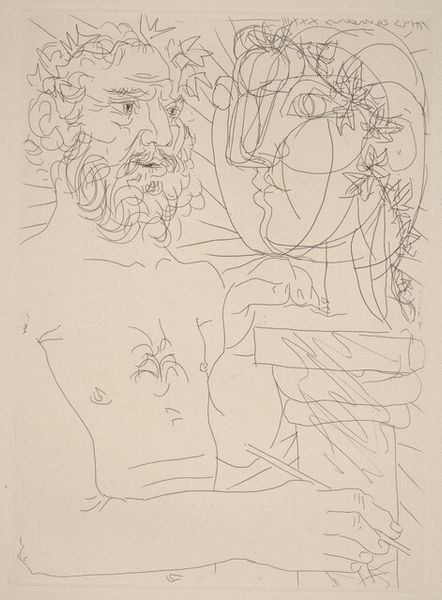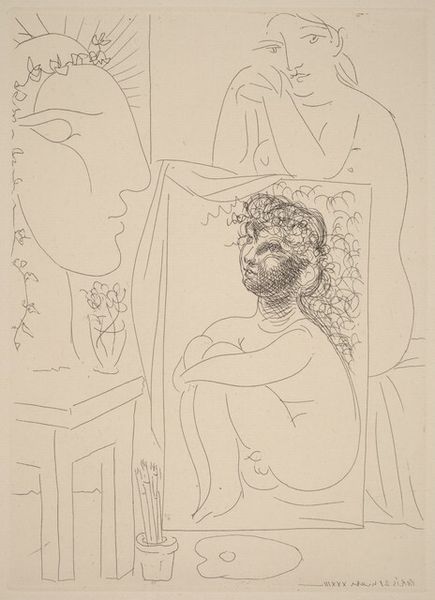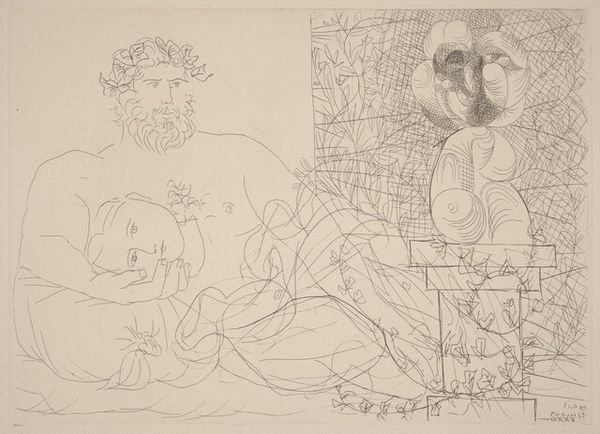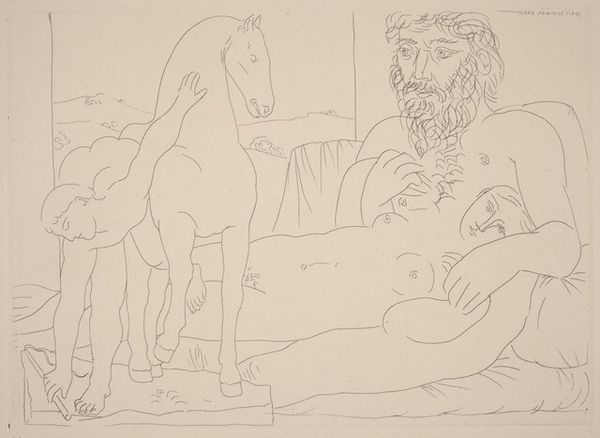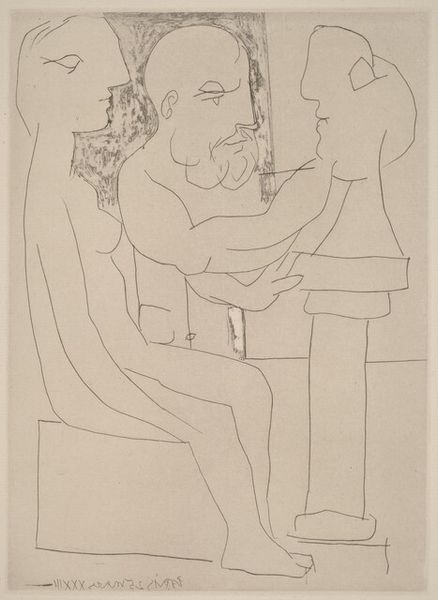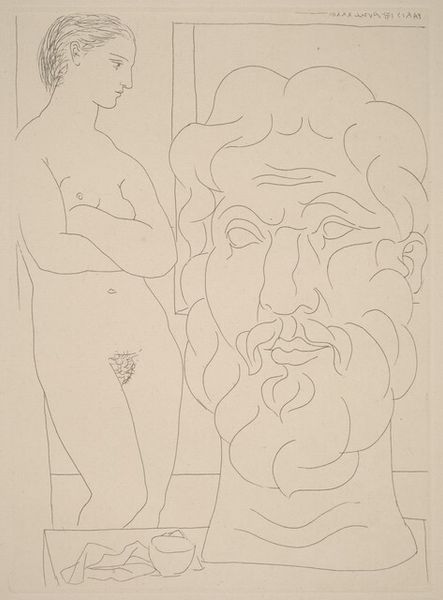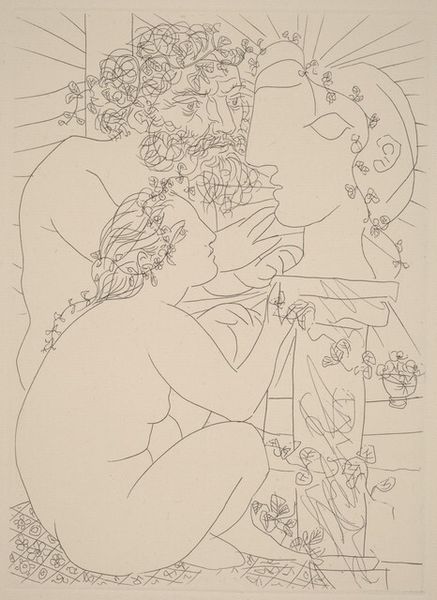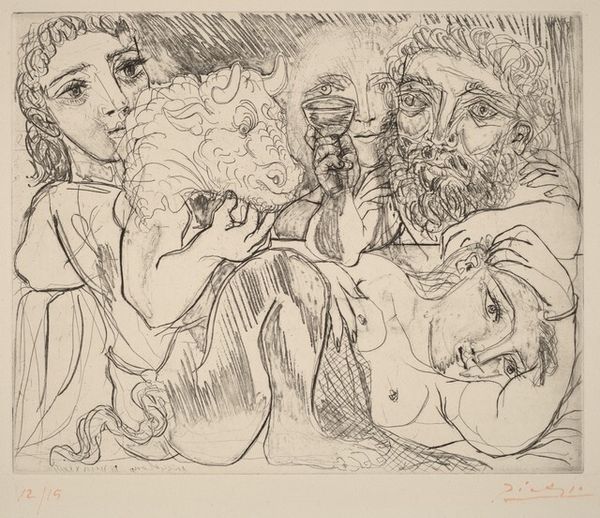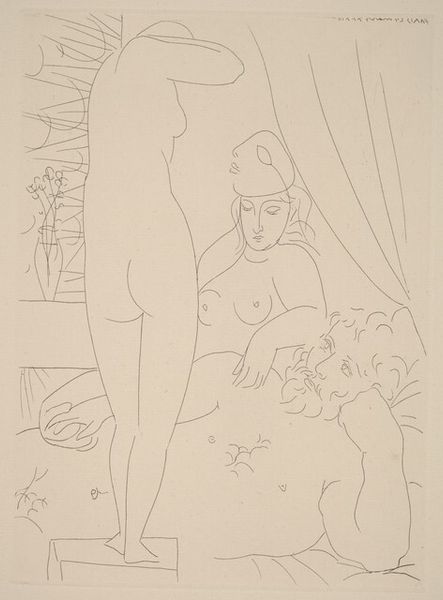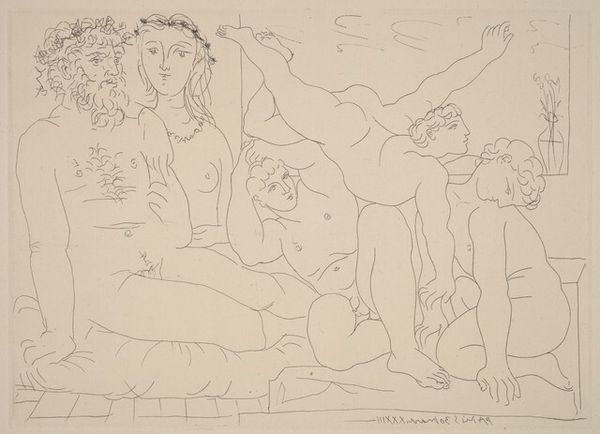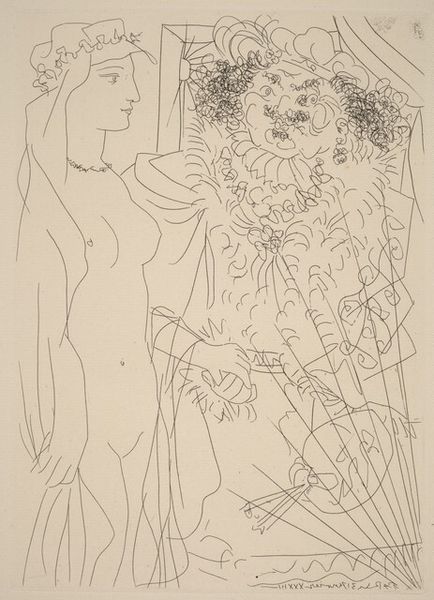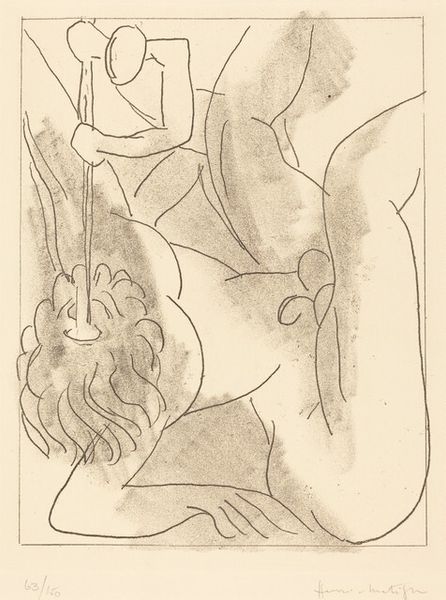
Sculptor with His Self-Portrait Serving as a Pedestal for a Head of Marie-Thérèse (Sculpteur et son autoportrait sculpté servant de socle à une tête de Marie-Thérèse) 1933
0:00
0:00
drawing, print
#
portrait
#
drawing
#
cubism
#
self-portrait
# print
#
figuration
#
line
#
modernism
Dimensions: plate: 26.7 x 19.3 cm (10 1/2 x 7 5/8 in.) sheet: 50.1 x 38.5 cm (19 3/4 x 15 3/16 in.)
Copyright: National Gallery of Art: CC0 1.0
Editor: Here we have Pablo Picasso's "Sculptor with His Self-Portrait Serving as a Pedestal for a Head of Marie-Thérèse", a drawing from 1933. I'm struck by the almost unsettling layering of identities within this single composition. What do you see in this piece, particularly in relation to the art world and society at the time? Curator: It's tempting to view this as a private scene, but Picasso, a shrewd observer of the art world, deliberately framed his relationships and artistic process for a public audience. The layering of images – sculptor, self-portrait, lover's head – suggests the constructed nature of artistic identity and celebrity. Editor: Constructed? How so? Curator: Think about it. In 1933, Picasso was already a celebrated, almost mythical figure. This print presents not an intimate view of the artist's studio, but a carefully staged presentation of his persona. He's playing the role of the classical artist, yet also asserting his own avant-garde style through Marie-Thérèse's cubist representation. He controls the narrative, literally placing himself as the foundation upon which her image, and arguably his fame, rests. Who controls what we see in an artwork is as critical as the final marks. Do you think this is unique to this artwork? Editor: That's fascinating, it suggests he's very aware of his position and is almost performing it for an audience, even in what seems like a private sketch. I see it now! Curator: Exactly. Also notice how print media makes art, even images of the artist, democratically available and not in an art museum necessarily. Even the lines feel like his earlier, graphic, social commentaries and propaganda work, accessible in the local cafe, but this work comments instead on high-brow artistic commentary and reputation-making! Editor: So it is political? How interesting to learn to notice these clues! Thank you! Curator: And for that awareness alone it's a critical commentary to understand even to this day! The artwork might feel like an ancient myth, and yet be completely attuned to modernity.
Comments
No comments
Be the first to comment and join the conversation on the ultimate creative platform.
